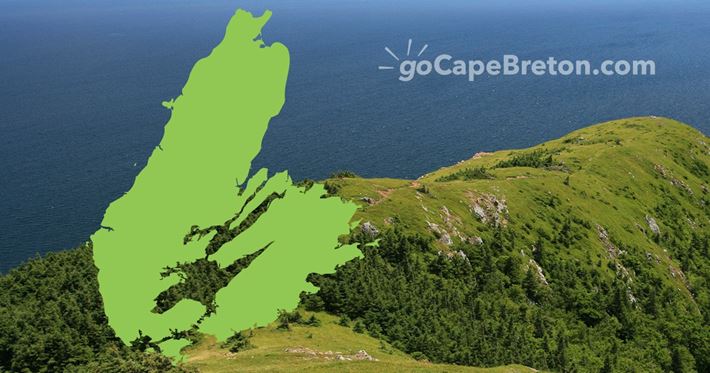Almost two months after the 2018 moose cull ended on North Mountain in the CB Highlands National Park, Parks Canada provided information in a CB Post article on Jan. 14, 2019 titled "Restoration 'encouraging'".
There it stated that twig availability had increased to 95 percent - a sign of forest restoration. Measurements taken at the plot on North Mtn. where the moose cull takes place, and at the French Mtn. control plot where there is NO cull indicated that “...both areas have shown a statistically significant decrease in browsed twigs.” So, were 138 moose and untold numbers of unborn fetuses killed unnecessarily in moose culls for a Bring Back the Boreal project? It would appear so when BOTH areas show statistically significant results.
I will only repeat what I have in the past about helicopter use - 97% use in killing moose is obscene in a study area chosen for its grassland and easy accessibility, and it is well beyond its scope in the Hyperabundant Moose Management Plan for North Mtn.
PC STRATEGIC COMMUNICATIONS:
PC states that “As an Agency that directly serves the Canadian public, Parks Canada actively seeks opportunities to share information...”. Yet, a communications plan which greatly limits information sharing with the public was apparently developed after the outpouring of negativity resulting from the 2014 news of a moose cull to take place in the National Park. Now:
- Key talking points emphasize the forest and tree planting, and underplay moose killing.
- Sparse information in the form of Information Bulletins announce road closures and re-openings to local communities and to local and regional media. In an email in Nov.2016, PC actually considered NOT sending out the IB because “we hadn’t heard from media yet about the start date so we considered not sending out an Information Bulletin. But....we did receive a media request yesterday so we thought it best to inform all media (and, by extension, the public) of the start date and the safety measures we’re taking this year.”
- Restricted zones during the cull prevent unauthorized persons not involved in the cull (media and the public) from stopping and seeing what is going on, with the possibility of law enforcement action if one does not comply.
- Anticipatory media questions and answers are constantly developed, edited, and approved by Ottawa, for use if the media or the public contact PC.
- Website and social media provide sanitized information for the public. At the end of the 2018 cull, the PC facebook page posted that road closures were lifted but did not mention that the reason was because a moose cull had ended, or had even taken place.
PC documents show a decrease of public negativity from 48% to 7%. The decrease can be directly tied to their strategic communications approach which falls far short of, according to their own words, “Parks Canada’s commitment to open and transparent communications..”, and is nothing to be proud of.
A PC email about harvest communications states “....the only real comms planned is the pre- and post-InfoBulletin, and reactive media relations. If that is indeed the case, I have no concerns.” There is an obvious lack of transparency in information sharing by this federal department which is there to serve the Canadian public, but which is very selective about what it feels the public should know.
To quote from a thesis submitted to U. Alberta in 2017, regarding Wildlife Management in Parks and Protected Areas:
“National Parks are managed in the interest of and for the people of Canada, therefore, their perceptions and opinions inherently matter. National Parks are held in public trust. Any plans that involve the removal of living animals require and deserve thorough communicated thought, consideration, and consultation .....”
Muzzling of information by PC seems to be happening across Canada as seen in an article found online: https://thenarwhal.ca/parks-in-the-dark/ .
INCORRECT PUBLIC INFORMATION:
According to PC, the general public can refer to the PC website and social media to learn what is happening in their Park. But if that information is incomplete or incorrect, how would the public know the truth since such efforts are made to keep Parks operations from the public eye?
A clear example exists on the CBHNP webpage which was apparently updated in 2018: https://www.pc.gc.ca/en/pn-np/ns/cbreton/decouvrir-discover/conservation/foret-forest/reduire-reduction There, it states that “In 2012, after the Hyperabundant Moose Management Plan was approved, Parks Canada ......entered into an Interim Arrangement ....”
The Interim Arrangement which was first signed in May 2012 discusses hyperabundant wildlife management. However, it was in fact signed more than 3 years BEFORE the required HMMP was approved on Nov. 3, 2015.
PUTTING THE CART BEFORE THE HORSE:
As far back as October 2014, CBHNP was ready to start having moose killed on North Mtn. In an approved Memo to the Minister, signed on October 20, 2014 by then Parks Canada CEO Alan Latourelle, the plan was to proceed ‘by lethal removal’ as early as December 2014, and even before fulfilling the then requirements of a PC Management Directive for Hyperabundant Wildlife:
- BEFORE a 2015 moose population aerial survey was used to indicate that moose were seemingly hyperabundant in the Park;
- BEFORE a required Basic Impact Analysis was approved on Oct. 30, 2015. Interestingly, the BIA was recommended, approved, and signed by the same individual, working in three different capacities at the time for the CB Highlands National Park - Resource Conservation Manager, Acting Superintendent, and Project Manager;
- BEFORE a Hyperabundant Moose Management Plan for North Mountain was recommended on Nov. 2, 2015 by the same individual who signed the BIA in three capacities, and was then approved on Nov. 3, 2015.
CBHNP PARK-WIDE MOOSE REDUCTION:
In the last paragraph of the CB Post article it states: “...Parks Canada will spend the year analyzing the results of its pilot project...” as if a future direction is not know. Yet, a Bring Back the Boreal document states “2018-19 is a transition year from BBB to phase II.” Phase II appears in a Feb. 2018 Moose Management Update for CBHNP showing “ Next Phase....Park-wide hypermoose mgmt...”.
Park wide moose population reduction appears to have been a ‘next step’ in the PC minds long before the North Mtn ‘project’ even began in Nov. 2015.
- In a Sept. 2014 memo discussing key items in a Hyperabundance Workshop Agenda for invited stakeholders, it stated: “...note somewhere that a large hyperabundance exercise will be held.” That same agenda also noted, “Proposed scenario is lethal removal”. Even the October 2014 memo signed by Alan Latourelle referred to park wide moose reduction.
- In Nov. 2015, a HMMP Road Map document mentions Phase I as being for North Mountain and Phase II as being for all of the Cape Breton Highlands National Park. Also, a Nov. 2015 Memo to the Minister about North Mtn. states “This is a project with a more widespread implementation of hyperabundant moose management encompassing the entire Park, planned in the future.”
- In October 2017, a question and answer about future moose harvests in the CBHNP showed that “...Parks Canada will be initiating park-wide hyper abundance management...”. Termed as a ‘Made in Nova-Scotia process’, hunting in the Park is noted in a Dec. 2017 Memo to the Minister: “Work on the moose population reduction program .... will likely result in the implementation of harvesting rights in National Park contexts in Nova Scotia.”.
There are many other references throughout ATIP documents.
CHANGING NATIONAL PARK?
It appears that the CB Highlands National Park, and perhaps others, may be about to change from what we have always believed were safe and protected areas to something very different if Park-wide hunting is approved.
PC places a great deal of value on the visitor experience for those who come to our National Parks. Yet, what might it be like for CBHNP visitors if hunting is allowed throughout our Park? Would certain hiking trails be restricted at times, or some scenic lookoffs be off limits? The wildlife that visitors come in hopes to see may no longer be there. Imagine welcoming Park visitors with Restricted Zone signs, as are currently posted during the moose cull and which, according to the ATIP document, warn the public of possible law enforcement action if they stop their vehicle in a zone where shooting is taking place.
Perhaps the future Park visitor experience will include a mandatory dress code of hunter orange vests and hats.
MY THOUGHTS:
The boreal forest in the CBHNP, like nature, is ever changing and not something that can be retained at a certain stage, like a snapshot in time. Yet, PC appears to be impatiently trying to recreate the pre-budworm landscape.
After the past extermination of CB moose from apparent overhunting, forests in CB were no doubt able to grow up in areas where they may not have existed before. Following moose re-introduction in the CBHNP in the late 1940's, their numbers appeared to stay under control until years after the spruce budworm infestation had affected some forested areas.
Nature has always controlled animal populations - they die, they reproduce, they move around. CBHNP graphs of moose population density clearly show a decline from a high of about 4.5 moose per sq km in 2004 to less than 2 per sq km in 2015, through natural process and without human interference.
If Parks Canada wants to interfere to affect the natural landscape, it should be done by means other than killing living creatures. More tree planting, more fenced exclosures, and even relocation of Park moose to another area should all be considered. According to a 2007 report (see Alces43_111.pdf), NSDNR has had reports in the past 25 years of sightings of moose swimming across the narrow Strait of Canso from southern CB to mainland NS, and back, making the issue of distinct DNA in CB moose not significant. However, PC has shown a preference for killing - something which is supposed to be done as a 'last resort', but which appears to have become the method of choice in our National Park.
Nature has been controlling the natural landscape since time began, and given a chance it will continue to do so. Parks Canada should learn patience, and not try to affect outcomes by killing living creatures. There are better ways.
Rose Courage
Sydney/Victoria County






0
Log In or Sign Up to add a comment.- 1
arrow-eseek-eNo items to displayFacebook Comments